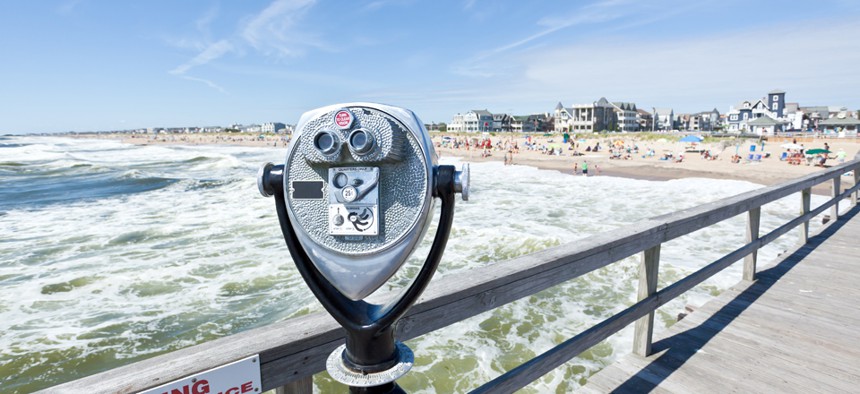The Roller-Coaster Economies of Vacation Towns

Ocean Grove, New Jersey s one of many beach towns on the Jersey Shore. Flickr user gary718
The end of summer is nearly here. Which U.S. cities are about to radically change?
Labor Day, the unofficial end of summer, is right around the corner. As we head back to school or back to work, stuffing bathing suits in hard-to-reach drawers, it's a good time to ask: what does the end of tourist season mean for cities and metros that rely on tourism dollars?
Using Bureau of Labor Statistics (BLS) data on monthly employment (not adjusted for seasonality) from 2004 to 2013, my colleague Todd Gabe , an economist at the University of Maine, crunched the numbers to identify the places that see the biggest drops in leisure and hospitality employment.

The map above charts the change in leisure and hospitality employment from August to September. Nationally, leisure and hospitality employment drops by roughly 3 percent between those months. But for some metros, it’s quite a bit worse than that. The hardest hit places, not surprisingly, are summer vacation spots in the Northeast. Two places – Ocean City, on the New Jersey shore (-24.8 percent) and Glens Falls, New York (-24.5 percent) – lose roughly one in four of their jobs during the off-season. And two others – Barnstable Town, Massachusetts, in Cape Cod (-19.5 percent); and Rapid City, South Dakota (-20.9 percent), just half an hour from Mount Rushmore and the annual Sturgis Motorcycle Rally – lose one in five.
But there are also places that gain leisure and hospitality jobs between August and September. Those big gainers are all college towns with football programs gearing up for a new season. They include: State College, Pennsylvania (6.7 percent), home to the Nittany Lions (and Penn State); Bloomington, Indiana (6.3 percent), the Hoosiers (and Indiana University); Gainesville, Florida (6.2 percent), the Gators (and the University of Florida); Tallahassee, Florida (6.1 percent), the Seminoles and the Rattlers (Florida State and Florida A&M); and Champaign-Urbana, Illinois (4.2 percent), the Fighting Illini (and the University of Illinois). As students and their parents flock to these metropolitan areas, the local tourism industry gets a boost.

The second map charts the change in leisure and hospitality employment for September to October. Nationally, leisure and hospitality employment drops another 1.7 percent between those months, on top of the 3 percent decline between August and September. But some resort towns take an even bigger hit in these early fall months. Ocean City, New Jersey, sees an even larger decline in leisure and hospitality employment between September and October, a whopping -37.6 percent. Glens Falls, New York (-15.6 percent) and Barnstable, on Cape Cod (15.3 percent), also see comparable declines during that period.

The third map shows the pattern for October-November. This map is substantially different from the first two. The big drops in Northern vacation spots have settled down and college towns have done most of their seasonal hiring. But now, leisure and hospitality jobs are increasing in winter vacations spots of the South and West. There's an especially notable jump in hospitality and leisure employment in Florida, where Naples-Immokalee-Marco Island sees a spike in employment those months (8.0 percent), as does Sebastian-Vero Beach (7.8 percent), Cape Coral-Fort Meyers (5.5 percent) and Port St. Lucie (5.3 percent).
Interestingly, the biggest drop in leisure and hospitality employment is not the summertime dip we see as Labor Day arrives. Instead, it’s in December and January, at the end of the holiday season, when tourism-related jobs fall by four percent, a full percentage point more than at the end of summer.
( Image via gary718 / Shutterstock.com )





